-
 Bitcoin
Bitcoin $105,347.8711
0.96% -
 Ethereum
Ethereum $2,550.5078
1.39% -
 Tether USDt
Tether USDt $1.0004
-0.02% -
 XRP
XRP $2.1582
1.72% -
 BNB
BNB $651.7235
0.44% -
 Solana
Solana $146.5846
1.78% -
 USDC
USDC $0.9999
0.01% -
 Dogecoin
Dogecoin $0.1777
2.68% -
 TRON
TRON $0.2709
-0.51% -
 Cardano
Cardano $0.6373
0.79% -
 Hyperliquid
Hyperliquid $42.2043
6.47% -
 Sui
Sui $3.0476
1.60% -
 Chainlink
Chainlink $13.2702
0.27% -
 Bitcoin Cash
Bitcoin Cash $435.5686
7.57% -
 UNUS SED LEO
UNUS SED LEO $9.0412
1.45% -
 Avalanche
Avalanche $19.3181
1.40% -
 Stellar
Stellar $0.2603
1.22% -
 Toncoin
Toncoin $3.0233
2.01% -
 Shiba Inu
Shiba Inu $0.0...01213
3.46% -
 Hedera
Hedera $0.1588
2.17% -
 Litecoin
Litecoin $86.2495
3.74% -
 Polkadot
Polkadot $3.8196
0.90% -
 Ethena USDe
Ethena USDe $1.0006
0.01% -
 Monero
Monero $311.4040
0.67% -
 Dai
Dai $0.9999
0.01% -
 Bitget Token
Bitget Token $4.5613
1.06% -
 Pepe
Pepe $0.0...01117
4.95% -
 Uniswap
Uniswap $7.4671
4.11% -
 Pi
Pi $0.5866
4.86% -
 Aave
Aave $286.3474
5.97%
How is the QR code of a wallet address generated?
A wallet address is a unique identifier derived from cryptographic keys, used to send and receive cryptocurrencies securely on blockchain networks.
Jun 13, 2025 at 10:49 pm
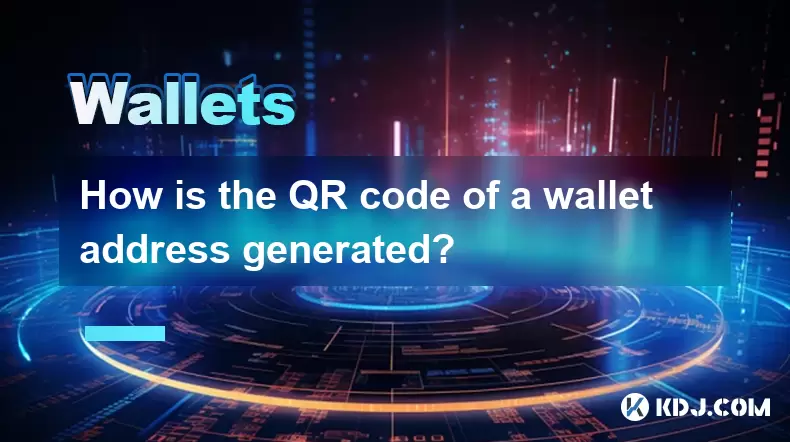
Understanding the Basics of a Wallet Address
A wallet address is a unique identifier used in blockchain networks to send and receive cryptocurrencies. It is derived from a pair of cryptographic keys — a private key and a public key. The private key is kept secret and grants control over the funds, while the public key is used to generate the wallet address. This address is what users share with others to receive crypto payments.
The wallet address is typically represented as a string of alphanumeric characters. However, for convenience and error prevention during transactions, this string is often converted into a QR code, which can be easily scanned using mobile or desktop wallets.
The Role of QR Codes in Cryptocurrency Transactions
A QR (Quick Response) code is a two-dimensional barcode that can store data such as text, URLs, or other information. In the context of cryptocurrency, QR codes are used to represent wallet addresses visually. They eliminate the need to manually enter long alphanumeric strings, reducing the risk of typos and incorrect transfers.
When a user generates a QR code for their wallet address, they are essentially encoding the address into a scannable image. Wallet applications and online tools use specific algorithms to convert the wallet address into binary data, then format it into a matrix barcode that scanners can interpret accurately.
Step-by-Step Process to Generate a QR Code for a Wallet Address
To create a QR code for a wallet address, you must first ensure that the wallet address is correctly formatted and verified. Once confirmed, the following steps outline how the QR code is generated:
- Obtain the wallet address: This can be copied directly from your wallet interface.
- Choose a reliable QR code generator: Many online tools and libraries exist, such as QRCode.js, ZXing, or built-in features within wallet apps.
- Input the wallet address into the generator: Paste the address into the designated input field.
- Select appropriate encoding options: Most generators allow customization like size, color, and error correction levels.
- Generate and download the QR code: After processing, the tool outputs the QR code image in formats like PNG or JPEG.
Some advanced tools also allow embedding logos or branding elements into the QR code without compromising its functionality.
Technical Aspects Behind QR Code Generation
Underneath the surface, generating a QR code involves several technical layers. First, the wallet address undergoes UTF-8 encoding, converting the string into binary data. Next, the QR code generator applies error correction algorithms (like Reed-Solomon coding), ensuring that even if part of the image is damaged, the data can still be recovered.
The binary data is then mapped onto a grid of black and white squares, forming the recognizable QR matrix pattern. The version of the QR code (ranging from 1 to 40) determines the grid size and data capacity. For standard wallet addresses, versions 1 through 5 are usually sufficient.
Each QR code also includes position detection patterns, timing patterns, and format information to help scanners align and decode the image accurately.
Security Considerations When Using QR Codes
While QR codes offer convenience, they also pose potential security risks. A malicious actor could replace a legitimate QR code with one pointing to their own wallet address. Therefore, it's crucial to verify the contents of a QR code before scanning, especially when receiving large sums.
Additionally, always ensure that the QR code generation tool is trustworthy. Open-source libraries like ZXing or qrcode npm packages are preferred because their source code can be audited for security flaws. Avoid using unknown third-party websites that may log or manipulate the data being encoded.
If possible, cross-check the generated QR code by scanning it with a separate device or application to confirm that it resolves to the correct wallet address.
Frequently Asked Questions
Q: Can I generate a QR code offline without using online tools?
Yes, you can generate a QR code offline using open-source libraries or software installed locally on your computer. Tools like QRCode.js or Python’s qrcode library allow you to generate QR codes programmatically without an internet connection.
Q: What happens if the QR code gets damaged or partially obscured?
Modern QR codes include error correction mechanisms that allow them to remain scannable even if up to 30% of the image is damaged or missing. The level of resilience depends on the selected error correction mode during generation.
Q: Is there a difference between a wallet address QR code and a transaction QR code?
Yes, a wallet address QR code only contains the recipient’s public address. In contrast, a transaction QR code may include additional parameters like amount, message, or network type (e.g., testnet vs mainnet). These extra fields enable direct sending without manual entry.
Q: Are all wallet addresses compatible with QR code generation?
Most modern wallet addresses are fully compatible with QR code generation. However, certain legacy formats or exotic blockchain protocols might require special handling or conversion before they can be encoded properly. Always verify compatibility with your chosen QR code generator.
Disclaimer:info@kdj.com
The information provided is not trading advice. kdj.com does not assume any responsibility for any investments made based on the information provided in this article. Cryptocurrencies are highly volatile and it is highly recommended that you invest with caution after thorough research!
If you believe that the content used on this website infringes your copyright, please contact us immediately (info@kdj.com) and we will delete it promptly.
- Uniswap’s UNI Price Gains Traction
- 2025-06-14 15:40:12
- CoinShares Has Officially Registered a Solana ETF in Delaware Today
- 2025-06-14 15:40:12
- Pump.fun has once again offloaded a significant tranche of SOL
- 2025-06-14 15:35:12
- Midnight Protocol Aims to Transform Cardano: Charles Hoskinson reveals plans to connect Cardano, Bitcoin, and other chains via secure, cross-chain DeFi.
- 2025-06-14 15:35:12
- BitMart Exchange Lists NPCS AI (XNPCS) Tokenizing Next-Generation Analytics on the Solana Blockchain
- 2025-06-14 15:30:12
- Should Apple Buy Bitcoin? Michael Saylor Thinks So
- 2025-06-14 15:30:12
Related knowledge
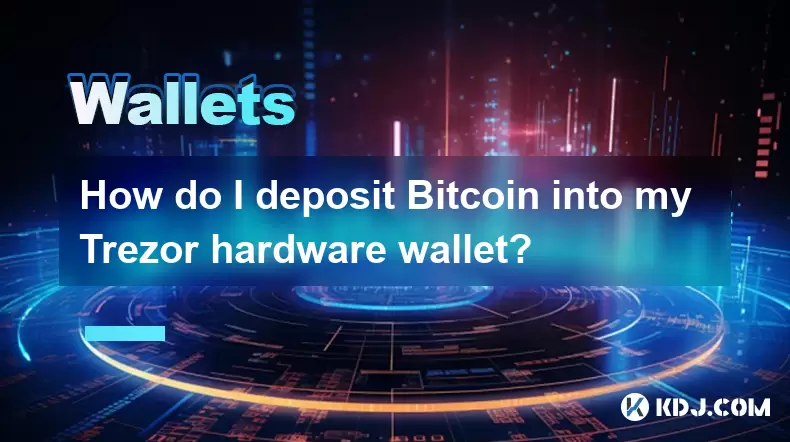
How do I deposit Bitcoin into my Trezor hardware wallet?
Jun 14,2025 at 12:29pm
What is a Trezor Hardware Wallet?A Trezor hardware wallet is a secure device designed to store cryptocurrencies offline, protecting them from online threats. Unlike software wallets, which are vulnerable to hacking and malware, Trezor stores private keys on the physical device itself. This ensures that transactions can only be approved by physically int...
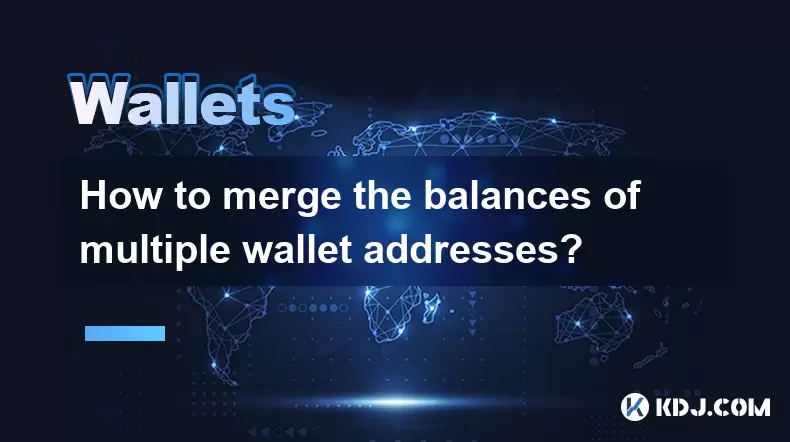
How to merge the balances of multiple wallet addresses?
Jun 13,2025 at 06:21pm
Understanding the Concept of Merging Wallet BalancesMerging the balances of multiple wallet addresses involves consolidating funds from different cryptocurrency wallets into a single address or account. This process is commonly undertaken by users who manage several wallets for security, diversification, or organizational purposes. Merging balances can ...
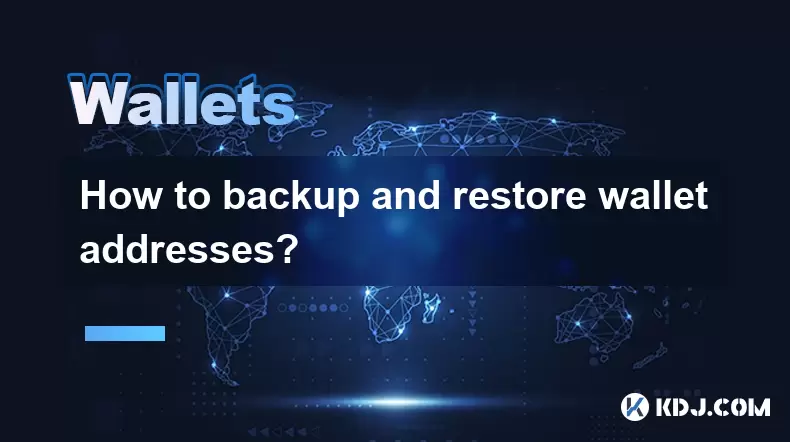
How to backup and restore wallet addresses?
Jun 14,2025 at 03:21pm
Understanding Wallet Addresses in CryptocurrencyIn the world of cryptocurrency, a wallet address is a unique identifier that allows users to send and receive digital assets. It functions similarly to an email address or bank account number. Each wallet address is associated with a private key, which grants access to the funds stored at that address. Los...

What is the UTXO model of wallet addresses?
Jun 14,2025 at 03:01am
Understanding the UTXO Model in CryptocurrencyThe UTXO (Unspent Transaction Output) model is a fundamental concept in blockchain technology, particularly in cryptocurrencies like Bitcoin. Unlike account-based models used by some other blockchains, such as Ethereum, the UTXO model functions more like physical cash transactions. Each transaction consumes ...

How is the QR code of a wallet address generated?
Jun 13,2025 at 10:49pm
Understanding the Basics of a Wallet AddressA wallet address is a unique identifier used in blockchain networks to send and receive cryptocurrencies. It is derived from a pair of cryptographic keys — a private key and a public key. The private key is kept secret and grants control over the funds, while the public key is used to generate the wallet addre...
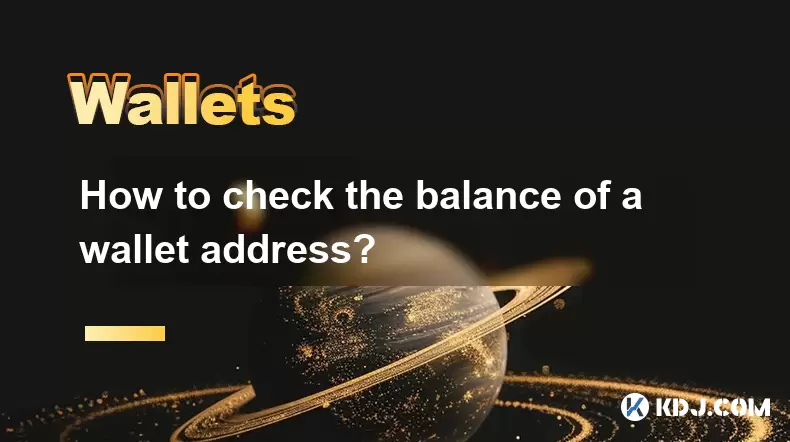
How to check the balance of a wallet address?
Jun 14,2025 at 08:56am
Understanding Wallet Addresses and Their ImportanceIn the world of cryptocurrency, a wallet address is a unique identifier used to send and receive digital assets. It functions similarly to an email address or bank account number. Every wallet address corresponds to a specific blockchain network, such as Bitcoin (BTC), Ethereum (ETH), or any other suppo...

How do I deposit Bitcoin into my Trezor hardware wallet?
Jun 14,2025 at 12:29pm
What is a Trezor Hardware Wallet?A Trezor hardware wallet is a secure device designed to store cryptocurrencies offline, protecting them from online threats. Unlike software wallets, which are vulnerable to hacking and malware, Trezor stores private keys on the physical device itself. This ensures that transactions can only be approved by physically int...

How to merge the balances of multiple wallet addresses?
Jun 13,2025 at 06:21pm
Understanding the Concept of Merging Wallet BalancesMerging the balances of multiple wallet addresses involves consolidating funds from different cryptocurrency wallets into a single address or account. This process is commonly undertaken by users who manage several wallets for security, diversification, or organizational purposes. Merging balances can ...

How to backup and restore wallet addresses?
Jun 14,2025 at 03:21pm
Understanding Wallet Addresses in CryptocurrencyIn the world of cryptocurrency, a wallet address is a unique identifier that allows users to send and receive digital assets. It functions similarly to an email address or bank account number. Each wallet address is associated with a private key, which grants access to the funds stored at that address. Los...

What is the UTXO model of wallet addresses?
Jun 14,2025 at 03:01am
Understanding the UTXO Model in CryptocurrencyThe UTXO (Unspent Transaction Output) model is a fundamental concept in blockchain technology, particularly in cryptocurrencies like Bitcoin. Unlike account-based models used by some other blockchains, such as Ethereum, the UTXO model functions more like physical cash transactions. Each transaction consumes ...

How is the QR code of a wallet address generated?
Jun 13,2025 at 10:49pm
Understanding the Basics of a Wallet AddressA wallet address is a unique identifier used in blockchain networks to send and receive cryptocurrencies. It is derived from a pair of cryptographic keys — a private key and a public key. The private key is kept secret and grants control over the funds, while the public key is used to generate the wallet addre...

How to check the balance of a wallet address?
Jun 14,2025 at 08:56am
Understanding Wallet Addresses and Their ImportanceIn the world of cryptocurrency, a wallet address is a unique identifier used to send and receive digital assets. It functions similarly to an email address or bank account number. Every wallet address corresponds to a specific blockchain network, such as Bitcoin (BTC), Ethereum (ETH), or any other suppo...
See all articles

























































































